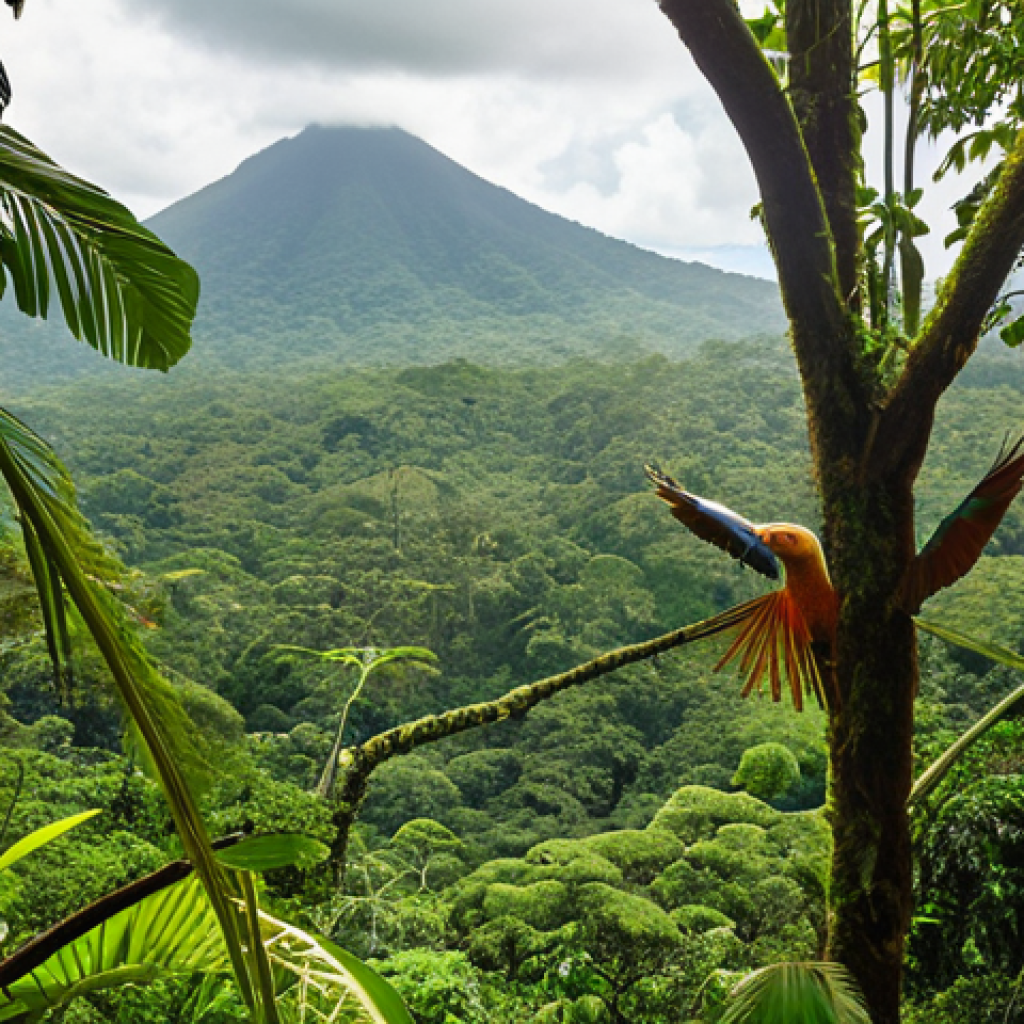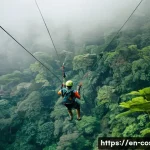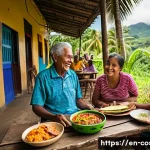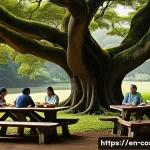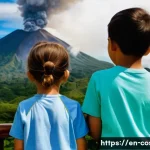Costa Rica. The name itself often conjures images of lush rainforests, pristine beaches, and the laid-back charm of “Pura Vida.” But behind this idyllic facade lies a vibrant history, shaped profoundly by extraordinary individuals whose visions and tireless efforts continue to echo through the nation’s very soul.
I’ve always felt that understanding a country truly begins with recognizing the people who molded its identity, and Costa Rica is no exception. From pioneering environmentalists whose foresight paved the way for its world-renowned conservation efforts—a crucial discussion point in today’s global climate crisis—to architects of peace who championed diplomacy over conflict, profoundly influencing international relations, these figures aren’t just historical footnotes.
They are living inspirations. Their legacies shape how we understand sustainable development and peaceful coexistence, pushing us to consider future models for a harmonious world.
Learning about them isn’t just a history lesson; it’s an immersive journey into the very heart of what makes Costa Rica, and frankly, humanity, so uniquely resilient and hopeful.
Let’s delve deeper and truly get to know them.
The Verdant Visionaries: Crafting a Nation’s Ecological Soul
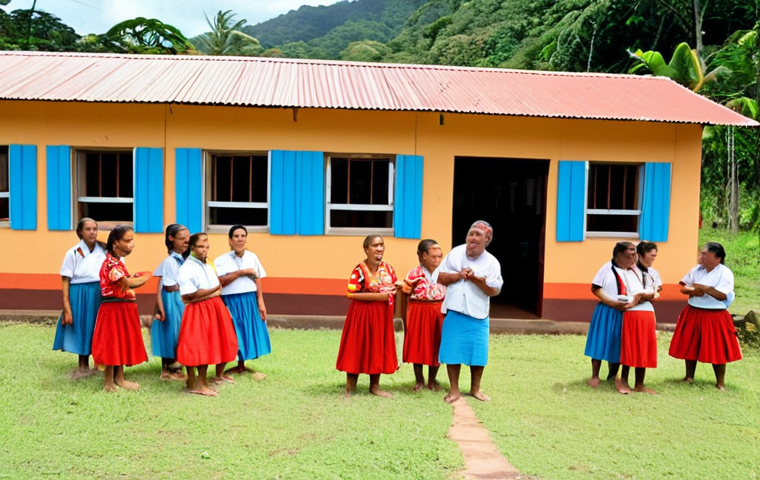
When I first experienced Costa Rica’s breathtaking natural beauty, it wasn’t just the sheer abundance of life that struck me; it was the palpable sense of reverence the country holds for its environment.
This isn’t accidental; it’s the profound legacy of individuals who, long before “sustainability” became a global buzzword, understood that the nation’s true wealth lay in its unparalleled biodiversity.
Their foresight shaped policies and instilled a conservation ethic that is now woven into the very fabric of Tico identity, making Costa Rica a global beacon for ecological preservation.
It truly makes you ponder how different our world might be if more leaders had possessed such a profound long-term vision. They didn’t just protect forests; they championed an entire way of life, convincing a nation that prosperity and environmental stewardship were not mutually exclusive but deeply intertwined.
This required immense courage and an unwavering belief in a future where nature thrived alongside human development. It’s a testament to their enduring impact that today, one can hike through a national park and see a sloth, knowing that countless dedicated efforts went into preserving that very habitat.
Forging a Path for Conservation: A Legacy of Protection
The journey to becoming a global leader in conservation was spearheaded by figures who saw beyond immediate economic gains, recognizing the intrinsic value of natural resources.
Their work laid the groundwork for the sprawling system of national parks and protected areas that now covers over 25% of Costa Rica’s landmass, a feat truly remarkable for a developing nation.
This wasn’t achieved overnight; it was a tireless battle against conventional development models, advocating for a future where ecotourism and sustainable practices would generate revenue while safeguarding precious ecosystems.
It’s inspiring to consider the sheer determination these early pioneers must have possessed to champion such radical ideas at a time when environmentalism was barely a whisper on the global stage.
They had to educate, persuade, and legislate, often facing significant opposition from those who couldn’t see beyond short-term exploitation.
- The visionary establishment of the national park
- Pioneering payment for environmental services: Costa Rica was a pioneer in implementing schemes where landowners are compensated for conserving forests, recognizing the vital services they provide like water purification and carbon sequestration. This innovative financial model became a global template for sustainable development.
- Educating future generations on ecological responsibility: Beyond policy, these environmentalists understood the importance of instilling an appreciation for nature in the young, ensuring that conservation would remain a core national value for decades to come.
The Living Heritage: How Their Work Shapes Modern Eco-Tourism
Walking through a national park like Manuel Antonio or Corcovado, it’s impossible not to feel the direct impact of these early conservationists. Their efforts didn’t just save trees; they created an entire industry around sustainable tourism, providing livelihoods for thousands and attracting visitors from around the world who seek genuine, nature-based experiences.
I’ve personally seen how a local guide, pointing out a rare bird, embodies the pride and deep connection to nature that these pioneers fostered. It’s a living, breathing testament to their work, demonstrating that economic prosperity can indeed go hand-in-hand with ecological integrity.
This fusion of conservation and commerce has provided a powerful model for other nations, proving that environmental protection isn’t a luxury but a fundamental component of national development and well-being.
- The growth of responsible tourism: Their foundational work ensured that as tourism grew, it did so with a strong emphasis on low-impact activities, minimizing environmental degradation while maximizing local benefits.
- Protection of endemic species: By safeguarding diverse habitats, they inadvertently became the guardians of countless unique plant and animal species, many of which exist nowhere else on Earth, enriching global biodiversity.
- Inspiring global environmental movements: Costa Rica’s success story, born from the tenacity of these early visionaries, has served as a powerful source of inspiration and a practical blueprint for conservation efforts worldwide, truly demonstrating what is possible with commitment.
The Architects of Peace: Building a Nation Without Arms
Costa Rica stands as a remarkable anomaly in a world often riddled with conflict: a nation that famously abolished its army in 1948. This bold, almost audacious, decision was not merely a political decree; it was the culmination of deeply held beliefs championed by extraordinary individuals who envisioned a future where resources were channeled into education, healthcare, and social welfare rather than military expenditures.
As someone who has grown up in a world where military might is often seen as a prerequisite for national security, I find Costa Rica’s commitment to peace deeply moving and profoundly aspirational.
It challenged, and continues to challenge, conventional wisdom, proving that a different path is not only possible but can lead to a more stable and prosperous society.
The palpable sense of safety and tranquility I’ve felt while traveling through the country, knowing that its national identity is built on diplomacy rather than defense, truly underscores the profound impact of these peace advocates.
It’s a powerful reminder that true strength often lies in restraint and strategic foresight.
A Revolutionary Disarmament: The Path to a Weapon-Free Nation
The decision to disband the military was a seismic shift, requiring immense political will and a profound commitment to democratic ideals. This wasn’t a sudden impulse but the result of decades of philosophical debate and the determined efforts of leaders who believed that a nation’s security lay not in its weaponry, but in its institutions, its people, and its commitment to international law.
They gambled on peace, investing in human capital instead of armaments, and the dividends have been extraordinary, setting Costa Rica apart as a unique model for international relations.
This radical decision, made in the aftermath of a civil war, demonstrated an incredible capacity for forgiveness and a forward-looking perspective that prioritized human development over martial glory.
It’s a narrative that deeply resonates in today’s increasingly militarized world, offering a hopeful counter-narrative.
- José Figueres Ferrer: Often credited as the driving force behind the abolition of the army, his leadership during a pivotal moment in Costa Rican history was instrumental in steering the nation towards a peaceful, democratic future. His vision redefined national security.
- The reinvestment in social programs: The funds previously allocated to military spending were redirected to education, healthcare, and infrastructure, directly contributing to Costa Rica’s high quality of life and human development indices. This practical application of peace principles is truly inspiring.
- Fostering a culture of diplomacy: Without an army, Costa Rica was compelled to become a master of international diplomacy and mediation, advocating for peaceful resolutions to conflicts on the global stage, solidifying its reputation as a neutral and trusted player.
The Global Ripple Effect: Costa Rica’s Influence on International Peace
The nation’s commitment to peace extends far beyond its borders. Costa Rica has consistently championed multilateralism, human rights, and the peaceful resolution of disputes in international forums.
Its leaders have become respected voices on the global stage, advocating for disarmament and the strengthening of international law. This diplomatic influence, born from its unique history, provides a compelling argument for the power of soft power over military might.
I’ve often thought about how Costa Rica’s bold choice serves as a living experiment, proving that genuine security can be achieved through non-military means, and it’s a lesson the world sorely needs to embrace.
The moral authority derived from its unarmed status gives its voice a particular weight and credibility when discussing global conflicts, making it a powerful advocate for peace.
- Oscar Arias Sánchez and the Nobel Peace Prize: His tireless efforts to bring peace to Central America in the 1980s, culminating in the Esquipulas Peace Accords, earned him the Nobel Peace Prize and underscored Costa Rica’s role as a regional peacemaker.
- Advocacy for environmental peacebuilding: Recognizing the links between environmental degradation and conflict, Costa Rica has also championed “green diplomacy,” promoting conservation as a tool for peace and stability, showcasing a holistic approach to security.
- Serving as a neutral ground for dialogue: The nation frequently hosts international peace conferences and serves as a safe haven for refugees and political exiles, embodying its commitment to providing a space for dialogue and reconciliation.
Educators and Social Reformers: Cultivating Human Potential
Beyond its natural wonders and peaceful stance, what truly makes Costa Rica exceptional is its profound investment in its people. This commitment isn’t new; it’s a deep-rooted philosophy nurtured by generations of educators and social reformers who understood that a nation’s greatest asset is an educated, healthy, and equitable citizenry.
I’ve always been struck by the warmth and intellectual curiosity of Costa Ricans, and I believe it stems directly from this unwavering dedication to public services.
They believed that universal access to education and healthcare was not just a right, but a prerequisite for national development and social harmony. This progressive mindset, particularly for a Latin American nation, stands as a towering achievement, setting a benchmark for human-centric development.
It’s a testament to their vision that walking through even the most rural parts of Costa Rica, you’ll likely find a well-maintained school and a health clinic.
Laying the Foundation for Universal Access: Education for All
The early pioneers of Costa Rican education recognized that an informed populace was essential for a functioning democracy and economic progress. Their tireless efforts led to policies that prioritized public schooling, making it accessible to all, regardless of social standing or geographic location.
This was a radical idea for its time, especially in a region often plagued by inequality. Their vision laid the groundwork for Costa Rica’s remarkably high literacy rates and its reputation as an intellectual hub.
It’s truly inspiring to see a nation so consistently commit to educating its youth, viewing it as the most critical long-term investment. This foundational work ensured that talent could emerge from anywhere, fostering social mobility and national unity.
- The progressive vision of Mauro Fernández Acuña: As a key figure in education reform in the late 19th century, his efforts modernized the public education system, emphasizing secular and compulsory schooling, which was revolutionary for the era.
- Investment in rural schools and infrastructure: A significant focus was placed on ensuring that even remote communities had access to quality education, reducing urban-rural disparities and fostering a more cohesive national identity.
- Prioritizing teacher training and professionalization: Recognizing that the quality of education depends on its educators, substantial resources were directed towards training and supporting teachers, elevating the profession’s status.
The Pillars of Social Equity: Healthcare and Welfare for Every Citizen
Complementing the educational reforms, influential social reformers championed universal healthcare and robust social safety nets. They understood that a healthy population was just as crucial as an educated one for national well-being and productivity.
These efforts culminated in a comprehensive public health system that stands as one of the best in Latin America, significantly improving life expectancy and reducing infant mortality.
This unwavering commitment to social welfare highlights a deep-seated belief in collective responsibility and solidarity, a value I deeply admire. It speaks volumes about the priorities of a nation when it chooses to guarantee fundamental services for all its citizens, not just a privileged few.
| Area of Influence | Key Contributions | Lasting Impact |
|---|---|---|
| Environmental Stewardship | Establishment of National Parks, pioneering PES schemes, global eco-tourism model. | Over 25% protected land, thriving biodiversity, global model for sustainable development. |
| Peace and Diplomacy | Abolition of the army, Nobel Peace Prize for regional peace efforts. | A unique unarmed democracy, leader in international diplomacy and human rights. |
| Education and Social Equity | Universal public education, comprehensive healthcare system, social welfare programs. | High literacy rates, excellent health indicators, strong social mobility. |
This table only scratches the surface of the interconnected achievements made possible by the dedication of these figures. Each category builds upon the others, forming a cohesive vision for a progressive nation.
- The establishment of the Caja Costarricense de Seguro Social (CCSS): This public health system, founded in the 1940s, provides comprehensive and universal healthcare services, becoming a cornerstone of social justice and a model for public health.
- Pioneering social security and pension systems: Early reformers also established robust social security programs, providing a safety net for workers and retirees, ensuring a basic standard of living for all citizens.
- A culture of collective well-being: These reforms instilled a national ethic where the health and education of one citizen are seen as beneficial to the entire society, fostering a strong sense of community and shared responsibility.
Visionaries of Economic Prosperity: Cultivating Sustainable Growth
While Costa Rica is celebrated for its natural beauty and peaceful ethos, it’s equally important to acknowledge the strategic minds who steered its economic development, often in creative and sustainable ways.
These figures, through astute policy-making and innovative approaches, helped transform a largely agricultural economy into a diversified powerhouse, attracting foreign investment and fostering homegrown industries.
I’ve always been impressed by Costa Rica’s ability to balance economic ambition with its core values of peace and environmental protection. It wasn’t about unfettered growth at any cost, but rather a measured, thoughtful approach to building a resilient economy that could support its robust social programs.
This delicate dance between development and preservation required genuine foresight and a pragmatic understanding of global economic currents, all while ensuring the benefits trickled down to a broader segment of the population, not just a select few.
They laid the groundwork for a stable, increasingly prosperous nation.
Diversifying the Economic Landscape: From Coffee to High-Tech
For a long time, Costa Rica’s economy was heavily reliant on agricultural exports like coffee and bananas. However, visionary leaders recognized the need to diversify and move up the value chain.
Their strategic policies attracted foreign direct investment, particularly in high-tech manufacturing, medical devices, and services, transforming the country into a regional hub for innovation.
This shift wasn’t just about jobs; it was about creating a more resilient economy less susceptible to global commodity price fluctuations and offering higher-skilled opportunities for its educated workforce.
It demonstrates a profound understanding of global economic trends and a willingness to proactively position the nation for future growth.
- Attracting foreign direct investment: Policies that created a stable investment climate, coupled with a well-educated workforce, made Costa Rica an attractive destination for multinational corporations, especially in tech and manufacturing sectors.
- Fostering innovation and entrepreneurship: Support for local businesses and startups, along with investments in research and development, encouraged a vibrant entrepreneurial ecosystem, moving beyond traditional industries.
- Developing niche markets in sustainable tourism: Beyond mass tourism, a conscious effort was made to promote ecotourism and adventure tourism, leveraging the country’s natural assets in a sustainable and high-value manner, appealing to a discerning global audience.
Infrastructure and Trade: Connecting Costa Rica to the World
Economic growth doesn’t happen in a vacuum; it requires robust infrastructure and strategic integration into global trade networks. Influential figures championed investments in roads, ports, and telecommunications, recognizing their vital role in facilitating commerce and attracting investment.
They also pursued beneficial trade agreements, ensuring Costa Rican products could reach international markets efficiently. This forward-thinking approach to connectivity has been crucial in enabling the country’s economic transformation and has directly contributed to the improved quality of life for its citizens.
It shows a pragmatic understanding of how a small nation can thrive in a globalized world by being strategic and open.
- Modernizing ports and transportation networks: Upgrading infrastructure was crucial for efficient import and export of goods, reducing logistical costs and improving market access for Costa Rican products.
- Forging international trade agreements: Proactive engagement in free trade agreements opened up new markets and attracted foreign investment, boosting exports and stimulating economic activity across various sectors.
- Investing in digital infrastructure: Recognizing the increasing importance of connectivity, efforts were made to expand internet access and digital services, supporting the growth of the technology sector and improving overall productivity.
Cultural Icons and Artistic Trailblazers: Reflecting the Pura Vida Spirit
Costa Rica’s soul isn’t just in its policies or landscapes; it resonates deeply in its vibrant culture, which is beautifully articulated by its artists, writers, and performers.
These cultural icons haven’t just entertained; they’ve reflected, questioned, and ultimately shaped the “Pura Vida” ethos, giving voice to the nation’s unique identity, history, and aspirations.
When I’ve attended local festivals or visited galleries in San José, I’ve always felt a profound sense of pride and creativity emanating from the works, a testament to the individuals who dared to express the Tico spirit.
They’ve captured the resilience, the warmth, the humor, and the quiet dignity of the Costa Rican people, translating everyday experiences into universal narratives that resonate far beyond their borders.
Their contributions are essential threads in the national tapestry, adding depth and color to the country’s global image.
Crafting the National Narrative: Literature and Storytelling
Costa Rican writers, poets, and playwrights have played a crucial role in documenting the nation’s history, exploring its social issues, and celebrating its unique character.
Through their narratives, they’ve helped shape a collective understanding of what it means to be Costa Rican, preserving traditions while also pushing boundaries of thought and expression.
Their works provide invaluable windows into the societal shifts, challenges, and triumphs that have defined the nation. It’s truly fascinating to see how literature can act as a mirror, reflecting a society back to itself and helping it to understand its own evolution and identity.
- Joaquín García Monge: A pivotal figure in Costa Rican literature, his work often depicted rural life and social issues, helping to define the early 20th-century literary landscape and fostering a sense of national literary identity.
- Eunice Odio: A renowned poet whose surrealist and metaphysical works gained international recognition, pushing the boundaries of Costa Rican poetry beyond its traditional forms and subjects.
- Carlos Luis Fallas (Calufa): His powerful, socially conscious novels and short stories, often focusing on the struggles of the working class and indigenous communities, gave voice to the marginalized and spurred social commentary.
The Rhythms and Hues of Costa Rica: Music, Art, and Performance
Beyond the written word, Costa Rican artists have expressed the nation’s vibrant spirit through music, painting, sculpture, and dance. These individuals have not only enriched the cultural fabric of the country but have also introduced Costa Rican artistic expressions to the wider world, showcasing the diverse talents and creative energy that define the “Pura Vida” lifestyle.
Their ability to translate the beauty of the landscapes and the warmth of the people into tangible art forms is truly remarkable. I’ve often found that engaging with a country’s art provides a shortcut to understanding its soul, and in Costa Rica, this holds especially true.
- Composers who fused traditional rhythms with classical forms: Musicians who explored and integrated indigenous and folk melodies into broader compositions, creating a distinctively Costa Rican sound that resonated with national pride.
- Painters who captured the country’s landscapes and people: Artists whose canvases depicted the lush natural beauty, the daily lives of ordinary Costa Ricans, and the historical moments that shaped the nation, preserving visual memories for generations.
- Dancers and choreographers who interpreted cultural narratives: Performers who brought Costa Rican folklore and modern themes to the stage, using movement to tell stories of heritage, resilience, and the evolving national identity.
Concluding Thoughts
As I reflect on the incredible tapestry woven by these Costa Rican visionaries, it becomes clear that the nation’s “Pura Vida” spirit isn’t just a catchy phrase; it’s a living testament to collective courage, foresight, and an unwavering belief in a better future.
From the lush rainforests they meticulously protected to the classrooms they filled with knowledge, and the peaceful diplomacy they championed globally, their contributions are deeply intertwined, building a society where well-being truly takes precedence.
It’s a powerful reminder that true national strength isn’t just about GDP or military might, but about the profound investment in its people and planet.
My experiences in Costa Rica have always underscored this, making me feel like I was walking through a nation built on purpose and passion.
Useful Information to Know
1. “Pura Vida” isn’t just a saying; it’s a lifestyle. You’ll hear it everywhere, meaning “pure life,” but it encompasses everything from “hello” and “goodbye” to “everything’s great” and “don’t worry.” It truly embodies the relaxed, optimistic, and appreciative spirit of the Costa Rican people.
2. The currency is the Costa Rican Colón (CRC), but U.S. dollars (USD) are widely accepted. Especially in tourist areas, you can pay with dollars, but you’ll often receive change in colones. It’s always a good idea to have some local currency for smaller purchases or less touristy spots.
3. Peak travel season runs from December to April (the dry season). This is when you’ll find the best weather for outdoor activities, but also higher prices and more crowds. The “green season” (May to November) offers lush landscapes and fewer tourists, with rain typically in the afternoons.
4. Public transportation can be efficient, especially buses, but private transfers or rental cars offer more flexibility. For exploring national parks and diverse regions, having your own vehicle, particularly a 4×4 if heading to more remote areas, can be incredibly beneficial. Roads can be challenging in some regions.
5. Tipping is customary but not always expected in the same way as in North America. Many restaurants include a 10% service charge and 13% tax on the bill. For tour guides and drivers, a few dollars per person is always appreciated, and you can round up taxi fares.
Key Takeaways
Costa Rica’s unique identity as an ecological haven, a beacon of peace, and a champion of human development is the direct result of visionary leaders across various fields.
Their foundational work in environmental protection, the audacious decision to abolish the military, and unwavering commitment to universal education and healthcare have collectively shaped a nation prioritizing quality of life over conventional power.
Furthermore, strategic economic diversification and the vibrant contributions of cultural icons have fortified this distinct “Pura Vida” ethos, demonstrating that a small nation can indeed set a global example for sustainable and equitable prosperity.
Frequently Asked Questions (FAQ) 📖
Q: Given the emphasis on extraordinary individuals, who are some of the most influential figures that have shaped Costa Rica’s unique identity, and why are they so significant?
A: Oh, this is where Costa Rica truly shines! When I first started digging into the country’s history, I kept stumbling upon names that just resonated. For peace, you can’t not talk about José Figueres Ferrer.
“Don Pepe,” as he was affectionately known, was monumental. After leading the 1948 civil war, he made the incredibly bold move of abolishing the army – can you imagine that?
He literally laid the groundwork for a truly peaceful nation, redirecting resources that would have gone to military might into education and healthcare.
Then there’s Oscar Arias Sánchez, a Nobel Peace Prize laureate, whose Central American peace plan in the 1980s was an absolute masterclass in diplomacy, pulling the region back from the brink of conflict.
On the environmental front, it’s often a collective effort, but the sheer foresight of those early visionaries who pushed for national parks and protected areas, back when “conservation” wasn’t even a global buzzword, deserves immense credit.
It really is their collective dedication that makes Costa Rica the green beacon it is today. You see their impact every single day, from a kid in a uniform walking to school to the incredible biodiversity thriving in Manuel Antonio National Park.
Q: How have the legacies of these pioneering environmentalists and peace architects impacted Costa Rica’s modern society and its global standing?
A: Their legacies aren’t just dusty old history books; they’re woven into the very fabric of daily life in Costa Rica. I mean, the “Pura Vida” isn’t just a cute saying; it’s a living philosophy, deeply underpinned by that historical commitment to peace and nature.
On a practical level, abolishing the army meant that resources could be funneled directly into public health and education, creating a remarkably high quality of life for its citizens.
I’ve personally seen how strong the public healthcare system is there, a direct result of these foundational decisions made decades ago. Globally, Costa Rica’s unwavering commitment to conservation has positioned it as a genuine leader in sustainable tourism and environmental policy.
When you visit, you truly feel this connection to nature; it’s almost palpable. It’s a powerful example to the rest of the world, demonstrating that economic development doesn’t have to come at the expense of the environment, a message that deeply resonates in today’s climate-conscious world.
Q: The text describes learning about these figures as an “immersive journey.” What tangible lessons can someone gain from exploring their stories, especially concerning future models for a harmonious world?
A: What an excellent question! For me, personally, diving into their stories wasn’t just interesting; it was genuinely inspiring. The tangible lesson?
It’s that radical vision, backed by unwavering courage and a deep commitment to humanity, can actually change the world. It’s so easy to feel overwhelmed by global challenges today, but looking at Costa Rica, you see that difficult, counter-intuitive choices – like opting for peace over military might, or prioritizing ecosystems over unchecked development – can lead to incredible, long-term positive outcomes.
It reinforces the profound idea that true security comes from social well-being and ecological health, not just military strength. Their stories are a powerful antidote to cynicism, showing us that alternative, more harmonious models for society aren’t just utopian dreams; they’re practical, achievable realities that have been built brick by brick, policy by policy, by dedicated individuals.
It truly makes you think, “If they could do that then, what’s stopping us now?”
📚 References
Wikipedia Encyclopedia
구글 검색 결과
구글 검색 결과
구글 검색 결과
구글 검색 결과
구글 검색 결과
